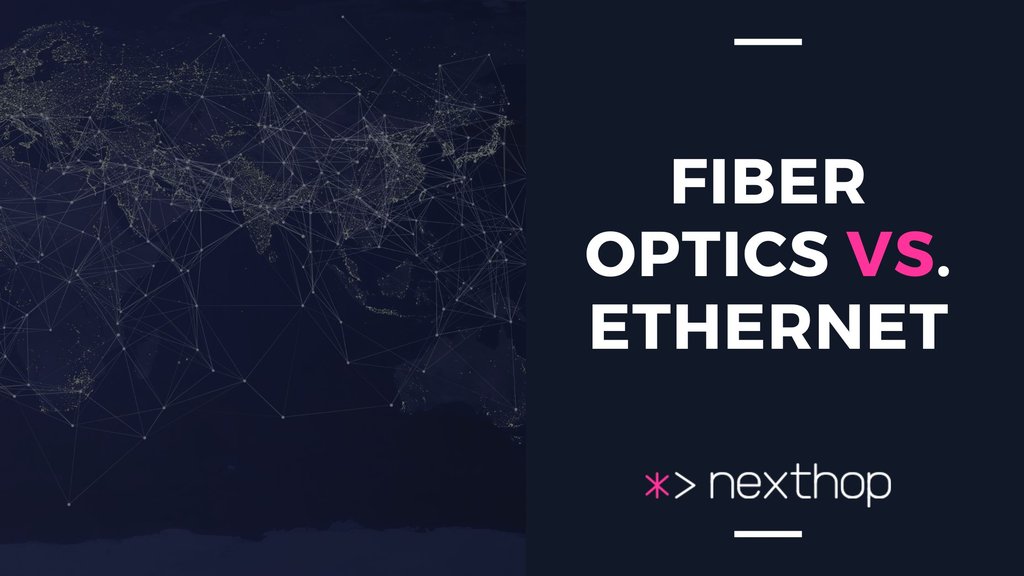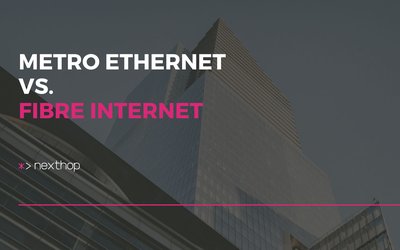Our blog
>
Fiber Optics vs. Ethernet: Which Network Connection Is Best for Your Data Center?
The main distinctions between Ethernet and fiber optics, two well-known network technologies frequently utilized in data centers, will be covered in detail in this article. We'll examine their underlying ideas, contrast performance indicators like scalability, cost, speed, and reliability, and talk about how these aspects affect which data center environments they work best in.
Fiber Optics
Fiber optic cables, which harness the power of light, provide exceptional speed, dependability, and bandwidth, making them an essential component of modern communication networks. In this section, we will look at the fundamental concepts of fiber optic communication and the numerous advantages it offers.
How Does Fiber Optics Work?
Fiber optics use light pulses that are passed via tiny glass or plastic strands to transfer data. High-speed and dependable long-distance communication is made possible by this technology.
- Light Generation: A laser or light-emitting diode (LED) generates a beam of light, typically in the infrared or visible spectrum.
- Modulation: The light signal is modulated, meaning it is encoded with information. This can be done by varying the intensity or frequency of the light.
- Transmission: The modulated light signal is transmitted through a thin, flexible fiber made of glass or plastic. The fiber acts as a waveguide, confining the light and guiding it to the destination.
- Reception: At the receiving end, the light signal is detected by a photodetector, which converts the light back into an electrical signal.
- Demodulation: The electrical signal is demodulated to extract the original data.
Benefits of Fiber Optics
Fiber optics offer several advantages, including:
High speed: Fiber optics can transport much more data than copper-based cables, making them ideal for high-speed applications such as internet connectivity, video streaming, and data centers.
Long Distances: They can send data over long distances with minimal signal degradation.
Immunity to Interference: Fiber optics are less vulnerable to electromagnetic interference (EMI), maintaining data integrity.
Security: Fiber optic cables are more difficult to tap than copper lines, making them a more secure way to send sensitive data.
Ethernet
Ethernet is a widely used networking technology that serves as the foundation for the majority of local area networks. Ethernet, which uses electrical impulses delivered over copper cables, allows PCs, servers, printers, and other network devices to communicate seamlessly. In this section, we will look at the fundamental principles of Ethernet, its important characteristics, and the benefits it provides.
What is Ethernet?
Ethernet is a standard networking protocol that connects devices on a local area network (LAN). It uses electrical impulses carried across copper cables to connect computers, servers, printers, and other network devices.
- Ethernet operates on a common medium, which means that all devices on the network use the same communication channel.
- Collision Detection: To avoid data collisions, Ethernet employs a technology known as Carrier Sense Multiple Access with Collision Detection. If two devices attempt to transmit data at the same time, they detect a collision and wait for a random backoff period before retrying.
- Data Frames: Ethernet data is sent in packets called frames. Each frame includes information about the sender, receiver, and data being sent.
Benefits of Ethernet
Ethernet has its own set of advantages:
Versatility: Ethernet is compatible with a wide range of devices and protocols, including TCP/IP, IPv4, and IPv6. This makes it a flexible and adaptable networking solution.
Lower Cost: Ethernet cables are often cheaper than fiber optics. This makes Ethernet a less expensive option for smaller networks or applications that do not require fiber optics' high capacity or long-distance capabilities.
Established Infrastructure: Ethernet has been the dominant networking technology for decades, and many current networks rely on it. This means that enterprises can use their existing infrastructure and knowledge to adopt Ethernet solutions.
Ease of Installation: Ethernet cables are easier to install and configure than fiber optic lines. This makes Ethernet a more accessible alternative for small businesses and consumers.
Looking for a data centre dark fibre connectivity option?
We`ve got you covered!
Month-to-month contract - $250 per month ($1000 setup)
Sydney
/
Melbourne
/
Brisbane
/
Perth
Fiber Optics vs. Ethernet: A Detailed Comparison
Understanding the major distinctions between fiber optics and Ethernet for your network infrastructure is critical. In this section, we will compare these two technologies in detail, focusing on speed, bandwidth, dependability, cost, scalability, and distance limits. This study will assist you in making an informed decision that is most appropriate for your specific network requirements.
Speed and Bandwidth
Fiber optics consistently beat Ethernet in terms of speed and bandwidth, making them suitable for high-end video streaming, cloud computing, and big data processing. Fiber may enable data transmission rates of up to 100 Gbps, but most Ethernet applications require speeds ranging from 1 Gbps to 10 Gbps.
Reliability and Performance
Fiber optics offer superior reliability due to their resistance to environmental factors and lower error rates, making them less susceptible to interference and signal degradation compared to Ethernet, especially over long distances.
Cost and Scalability
While fiber optic installations may have greater initial costs, they frequently provide long-term cost advantages due to decreased maintenance requirements and increased bandwidth capacity. Both technologies can be scaled to meet increasing network demand, although fiber optics often offer better long-term scalability and less disruptive improvements.
Distance Limitations
Fiber optics can transfer data over considerably greater distances than Ethernet without requiring signal amplification, making them ideal for large-scale data centers and wide-area networks. Standard Ethernet cables have a maximum length of around 100 meters before signal quality degrades, whereas fiber optic cables may transport data for several kilometers.
Your individual data center requirements will determine whether you should use fiber optics or Ethernet. Fiber optics excel at speed, dependability, and long-distance transmission, making them perfect for demanding applications. Ethernet provides adaptability while lowering initial expenses.
As technology advances and data demands grow, fiber optics and Ethernet will remain critical components of data center networking. However, fiber optics are becoming increasingly popular, particularly for applications requiring high-speed data transfer and outstanding performance.
Nexthop can help you choose the best network technology for your data center. Our professionals can evaluate your specific needs, make specialized recommendations, and help with the implementation and management of your network infrastructure.
Contact us today to learn more about how we can help you improve network performance in your data center.





